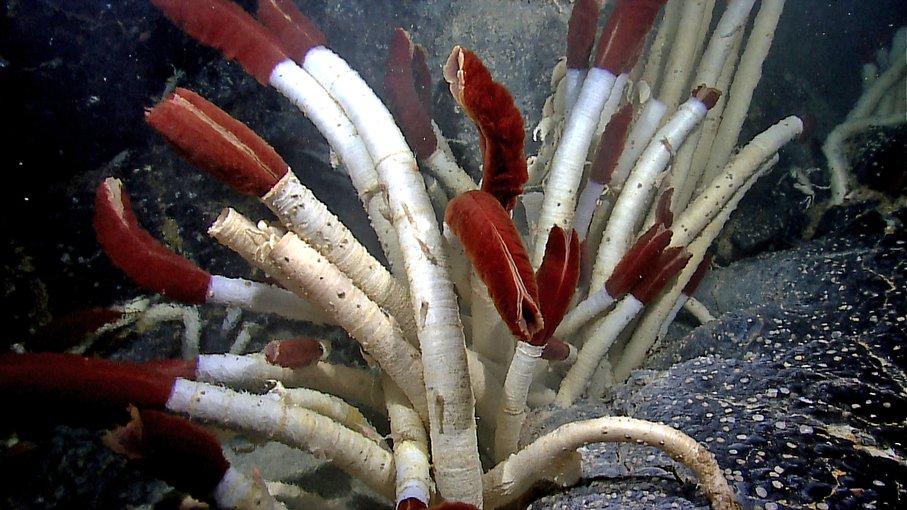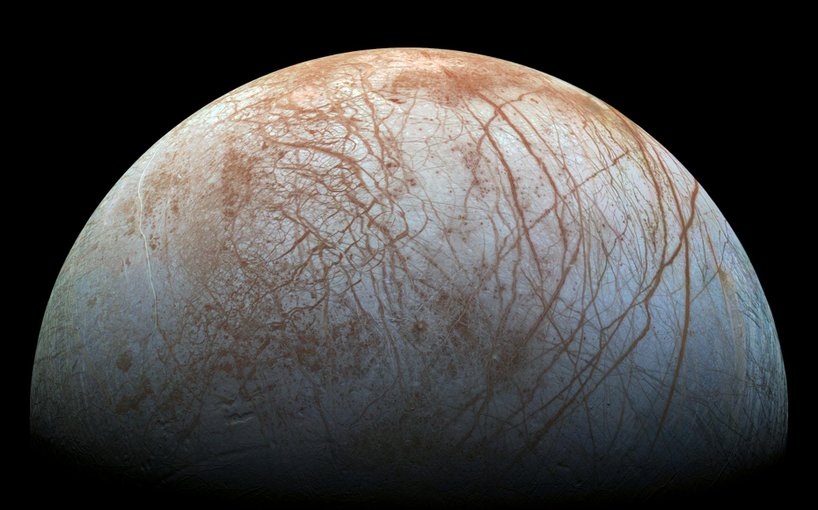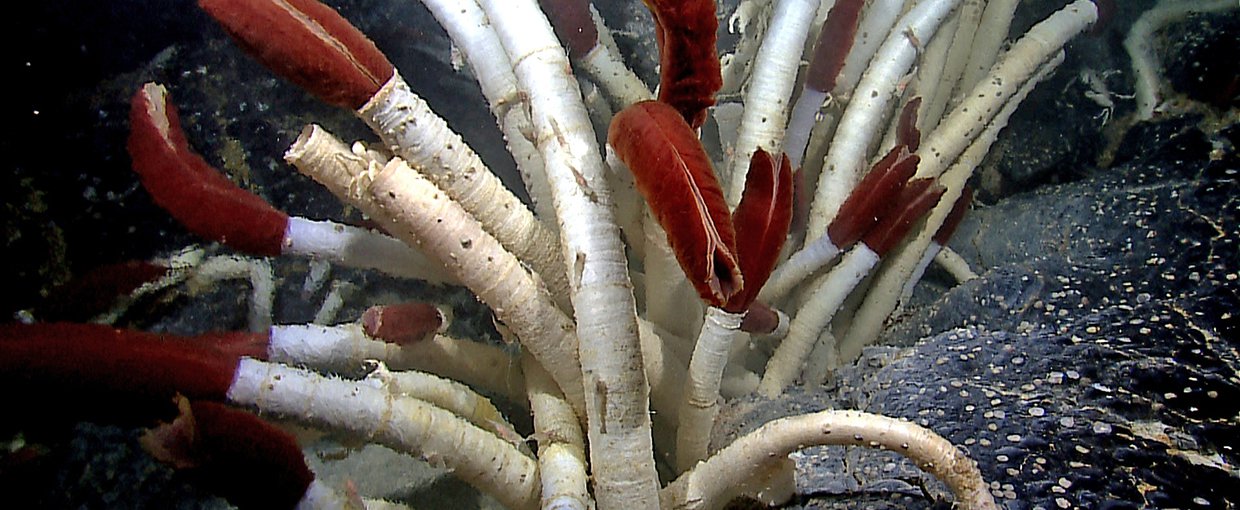
Alien life could potentially exist on the undersides of the icy shells of Jupiter’s moon Europa and other frozen worlds thanks to the intersection of chemical energy rising up from hydrothermal vents on the ocean floor and oxidants diffusing down from the surface.
Global oceans exist hidden beneath the icy crusts of bodies such as Jupiter’s moons Europa, Ganymede and Callisto, and Saturn’s moons Enceladus and Titan. Unlike Earth’s oceans, which are heated from above by the Sun, these vast water bodies are likely warmed from below by hydrothermal vents in the seafloor.
One potential source of the key building blocks of life in these hidden oceans could be chemical reactions between the seawater and the seafloor or the hydrothermal vents. Heat from hydrothermal vents would churn these waters, shuffling microbes and nutrients upward.

Species like vestimentiferan tubeworms, Riftia pachyptila, such as these found found near the Galapagos islands, represent the kinds of life that can persist near deep sea hydrothermal vents.Image credit: NOAA Okeanos Explorer Program, Galapagos Rift Expedition 2011.
At the same time, high-energy electrons bombarding the icy surfaces of these frozen worlds from their nearby giant planets would generate chemicals known as oxidants, which could help organisms make use of fuel molecules, just as oxygen helps life on Earth burn nutrients for energy. Churning of the icy crusts could deliver these oxidants into the hidden oceans.
Astrobiologist Michael Russell at NASA’s Jet Propulsion Laboratory in Pasadena, California, and his colleagues suggest that where an icy crust and a hidden ocean meet in a frozen world such as Europa, these two sources of the building blocks of life could join together and potentially support the evolution of life. At the underside of Europa’s icy crust, they suggest a shallow biosphere – a network of ecosystems – can form.
“All the ingredients and free energy required for life are all focused in one place,” Russell says.
The scientists detailed their research in a published paper in the journal Astrobiology.

Europa’s surface is a shell of ice covering a global ocean and displaying amazing features. Long, linear cracks and ridges crisscross the surface, broken by regions of disrupted terrain where the crust of surface ice has cracked and refrozen into new patterns.Image credit: NASA/JPL-Caltech/SETI Institute.
The scientists noted that the layers where ice and water meet can support a wide variety of life on Earth. Dense communities of multiple species of algae, bacteria, protists and even multicellular invertebrates form annually under the sea ice near Antarctica when ample sunlight fuels the photosynthesis of the algae. Also, runoff from the sulfurous Gypsum Springs on Axel Heiberg Island in the Canadian High Arctic is home to streamers of bacteria under the cover of snow and ice.
The researchers suggest their findings could help focus the search for any life on Europa by using robots to explore the undersides of icy crusts. They add that, on Europa, microbes could reach densities comparable to microbial mats on Earth.
“If we were to find life on Europa, then that would strongly support the submarine alkaline vent theory,” which suggests that life on Earth originated near underwater alkaline hydrothermal vents, says Russell.
Russell’s research was supported by the NASA Astrobiology Institute (NAI) element of the NASA Astrobiology Program.
